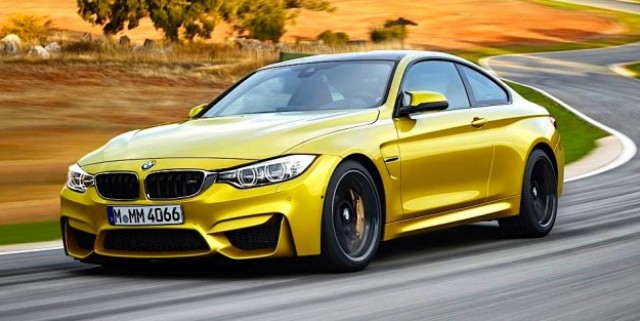
Details of the new additions to BMW Australia’s showroom in 2014.
BMW 2 Series coupe (February/March), 2 Series convertible (late 2014)
The BMW 2 Series coupe will arrive in Australia from February, marking the introduction of the German car maker’s all-new premium compact model line. Replacing the seven-year-old 1 Series coupe, the 2 Series coupe will launch with a range headlined by the brand’s newest M Performance Automobiles model, the 240kW/450Nm BMW M235i coupe, which claims a 0-100km/h sprint of 4.8 seconds. The M235i is expected to be joined by tamer 220i petrol and 225d diesel variants from launch. The BMW 2 Series Coupe is 72mm longer and 32mm wider than the 1 Series Coupe, and 30mm longer between the wheels. BMW claims the larger dimensions have liberated around 20mm extra front headroom and rear legroom, while the boot grows 20 litres to 390L. The coupe will launch with a sub-$50K starting price, and is expected to be joined at the end of the year by its two-door sibling, the 2 Series convertible.
BMW 4 Series convertible (February/March)
BMW Australia will expand its 4 Series range with the introduction of the convertible body style in February. Replacing the 3 Series convertible, the folding hardtop 4 Series will initially launch with one diesel engine (420d) and two petrols (428i and 435i), while an entry-level 420i is expected to follow later on. The new BMW 4 Series convertible is 50mm longer between the wheels than its predecessor and 26mm longer overall. BMW says the convertible’s weight drops up to 20kg for most variants, while torsional rigidity increases by 40 per cent. Its three-piece roof also claims to offer greater sound insulation, while the folding panels can be stowed within 20 seconds at vehicle speeds up to 18km/h. The 4 Series convertible will command a $10K to $15K premium over the coupe, roughly translating to prices of $85,000 for the 420d, $99,000 for the 428i and $120,000 for the 435i.
BMW X5 (February/March)
BMW Australia will expand its third-generation X5 range from February with the addition of three new engine variants. Most significant is the introduction of the $82,900 rear-wheel-drive sDrive25d and $87,900 all-wheel-drive xDrive25d models, which become the first four-cylinder variants offered in the local line-up. The entry models are powered by a twin-turbocharged 2.0-litre four-cylinder engine producing 160kW and 450Nm. Both claim an 8.2-second 0-100km/h, while the lighter sDrive variant is 0.2L/100km more frugal at 6.8L/100km. Their arrival will coincide with the introduction of the $106,900 xDrive35i and $115,900 xDrive40d 3.0-litre inline-six-powered variants – the former producing 225kW/400Nm from its petrol engine, the latter 230kW/630Nm from its diesel unit.
BMW M3/M4 (mid 2014)
Mid 2014 marks the introduction of the fifth generation of an icon and the arrival of a new hero in the M3 and M4 twins. The pair is powered by a newly developed twin-turbocharged 3.0-litre inline-six – the direct injection engine delivering 317kW between 5500-7300rpm, 550Nm between 1850–5500rpm, and redlining at 7600rpm. Weighing 1520kg in four-door five-seat guise (-85kg) and 1497kg with two doors and four seats (-83kg), the M3 sedan and M4 coupe claim a 4.1-second 0-100km/h when optioned with the seven-speed dual-clutch auto. Aiding weight loss are carbonfibre roof panels and strut braces, and aluminium bonnets, front quarter panels and suspension components. The M3 and M4 are longer, lower and wider than their predecessors, and claim to offer more cabin and boot space (480L sedan, 445L coupe). Pricing is tipped to start around $140,000 for the M3 and $150,000 for the M4.
BMW i3 (September)
The heavily hyped BMW i3 will arrive in Australia in September as the German manufacturer looks to get the jump on its premium rivals in the electric vehicle market. A ground-up design, the BMW i3 weighs from 1195kg thanks to its lightweight carbonfibre reinforced plastic and aluminium body. Two variants will be available from launch: the circa-$60K pure-electric model, and the plug-in hybrid model for about $10K more. The electric i3 claims a range of 130-160km in “everyday driving conditions” and takes roughly six hours to recharge from a special household wall charger, while the range-extender includes a 650cc two-cylinder petrol engine generator for a maximum range of 300km. BMW expects an even sales split between the two variants. The i3 will initially launch out of three dealerships in Melbourne, Sydney and Brisbane, though BMW insists all dealers across the country will be able to service and maintain its electric fleet.
BMW X4 (late 2014)
BMW will expand its SUV line-up to five models in 2014 with the introduction of the X4. Previewed by the Concept X4 at the Shanghai auto show in April, the BMW X4 crossover coupe will become to the X3 what the swoopy X6 is to the squarer X5. The X4 concept was slightly shorter, wider and lower to the ground than its X3 sibling, and blends styling elements from the all-new 4 Series and third-generation X5. The production model will borrow engines and transmissions from the X3 line-up, and like that model is not expected to spawn a high-performance X4M derivative. BMW X4 models are tipped to cost $10K to $15K more than their X3 equivalents, translating to a mid-$60K starting price.





